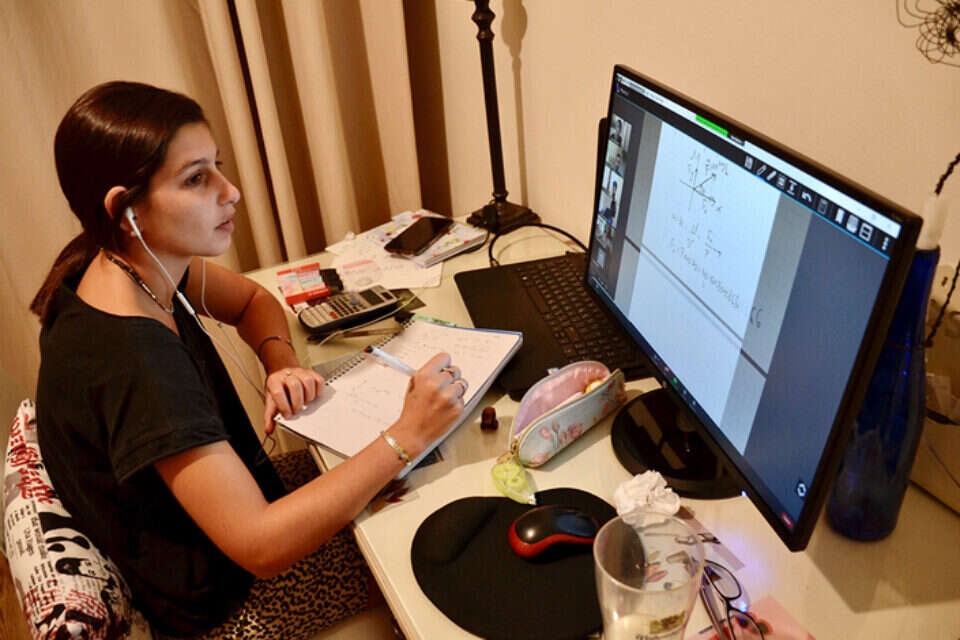Precisely after the Ministry of Education announced a return to distance learning in many of the red cities, the supply of computers for students from low-income families was stopped.
The cabinet decision stipulates that studies in the red cities in grades 8-12 will take place through zoom, in distance learning, if 70 percent of the students in the class are not vaccinated, recover or have a positive result on antibody testing (serological). Many large cities have already turned red, meaning dozens And even hundreds of students learning from home.
But despite this, the office does not carry out additional equipment and computers for students who do not have the means to purchase them.
In the previous school year, although about 160,000 computers were distributed, many students still do not have the means to do distance learning.
The ministry did not know how to answer the question of how many students in the education system still do not have a computer for distance learning, and it seems that they did not bother to check the extent of the shortage.
This means that some students, even in orange cities, will not be able to participate in distance learning.
At the same time, there is a double absurdity, since many of the red cities belong to a low socio-economic cluster, so that in any case the possibility for parents to purchase computers for their children decreases.
The result is that it is precisely in cities that will move to distance learning that there is the greatest shortage of computers and end-to-end devices.
Frontal learning in question.
A class in the days of Corona, Yehuda Peretz
"There is still a lot of work to be done, and many children are still disconnected," says Nimrod Dotan, director of the Psagot Education Association, which works to reduce social disparities and promote social leadership in the periphery. A boy and a girl for quality learning, regardless of their socio-economic status. "Dotan further noted that the digital divide between the children of the center and the children of the periphery was felt at its peak in the days of the Corona epidemic:"
"The effort of the Ministry of Education and of the civil society bodies has significantly reduced the gap, but more computers and resources are still needed."
M. Education: "We have improved"
It will be recalled that in the previous school year (1997/98), the Ministry of Education and its head - former Minister Yoav Galant - allocated NIS 1.2 billion to reduce digital disparities. This astronomical amount was not enough either. The Ministry of Education responded: "Over the past year, the ministry has carried out a computer distribution process, which has reduced technological gaps that have been widening in the education system for more than a decade.
In addition, the ministry is currently holding discussions with the Ministry of Finance on a fixed budget, in order to preserve the technological progress that has taken place over the past year. "
Computer for five
The shortage of computers in students' homes is only half the story, as the schools themselves also suffer from a shortage of computers and Internet infrastructure in the classrooms.
Another problem is that many students do not have digital skills, and most students have not been endowed with Internet literacy.
Data collected from thousands of students in Israel before the corona showed a dismal situation, according to which only 50% of middle and high school students used a computer for learning and examination purposes.
The data show that only 48% studied and practiced using a computer in middle school, and 49% in high school.
This is due to the fact that the teachers were also not trained for computer learning, and they also suffer from extremely low accessibility to the computer in the teachers' room.
For example, 40% of post-primary schools have one computer for more than five teachers.
According to Danny Fessler, CEO of Atid Education Network: "There was a recent attempt to adopt digital books, such as the smart board, about a decade ago, but the result on the ground is the same: a lot of good will, but little ability.
Although the Z generation student is very different from the one that preceded him by 20 years, the teachers continue to preserve the same traditional teaching methods, and not through their own fault - they remain with the old means.
But with the right guidance and extra hours and budgeting for 'development time' for teachers, and not just for students - we will definitely be able to close the gap. "

